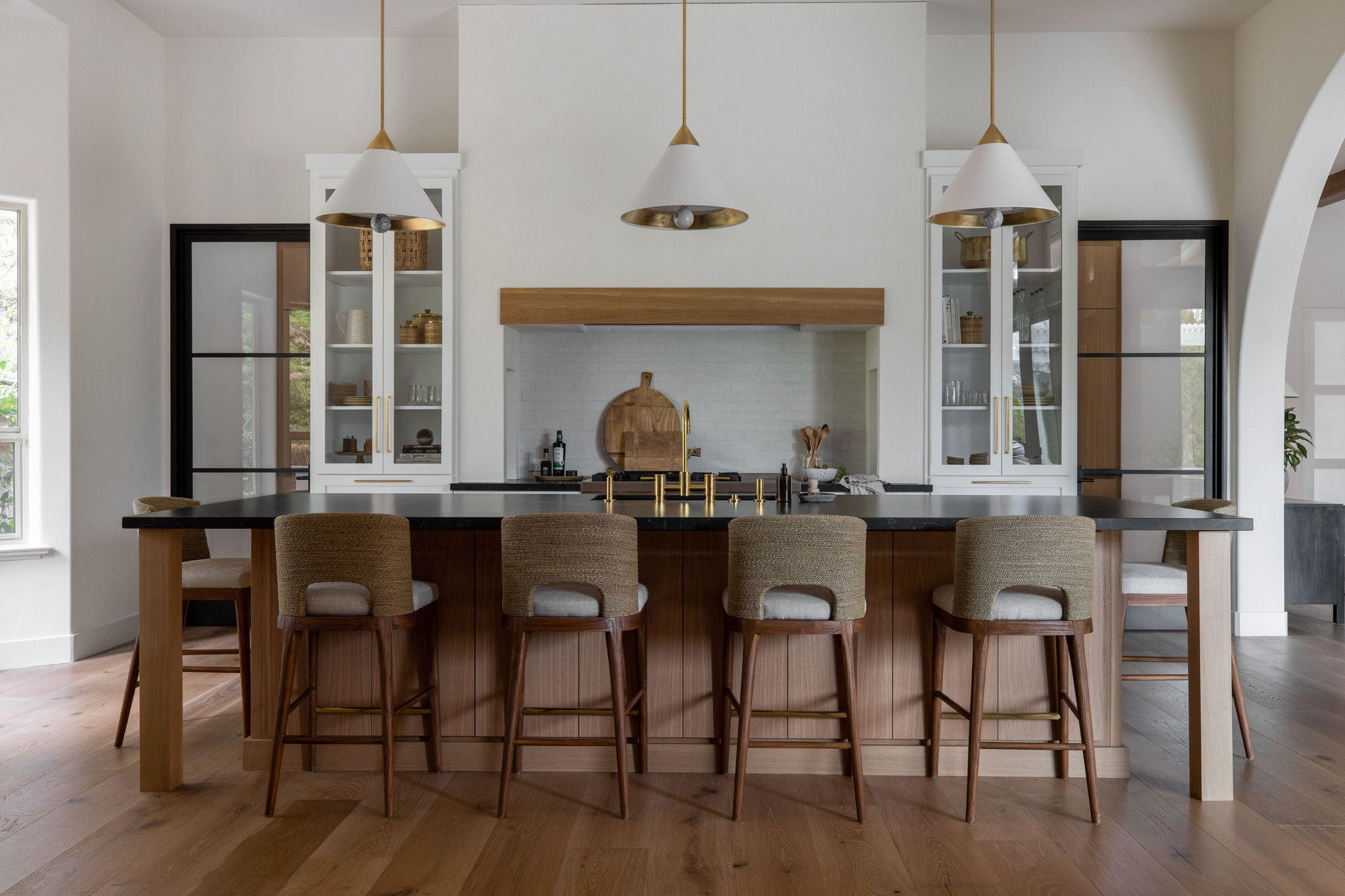Creating a home that feels balanced and harmonious is more than just arranging furniture and choosing colors; it’s about crafting a space that resonates with tranquility, functionality, and aesthetic appeal. Whether you’re designing a new space or reimagining your current one, here’s a guide to help you create a layout that feels effortlessly balanced and beautifully cohesive.
1. Understand Your Space
Before diving into design, take time to understand the dimensions and characteristics of your space. Measure each room and consider its shape, natural light sources, and architectural features. This foundational knowledge will guide your decisions and help you make the most of what you have.
2. Define Your Purpose
Each room in your home should have a clear purpose and function. Ask yourself:
- What activities will take place in this space?
- How many people will use it, and how often?
By defining the purpose of each room, you can tailor the layout to suit its function, ensuring that the space is both practical and enjoyable.
3. Create Zones for Functionality
In open-plan spaces, zoning helps to define distinct areas while maintaining a sense of flow. Consider using:
- Furniture Arrangement: Position furniture to delineate different zones, such as a reading nook or a dining area within a larger room.
- Rugs and Lighting: Use area rugs and varied lighting to visually separate zones without closing off the space.

4. Focus on Symmetry and Asymmetry
Both symmetry and asymmetry play important roles in creating balance:
- Symmetry: Symmetrical arrangements—such as matching nightstands and lamps—can create a sense of order and stability.
- Asymmetry: Incorporate asymmetrical elements, like a unique piece of art or an off-center light fixture, to add interest and dynamism to the space.
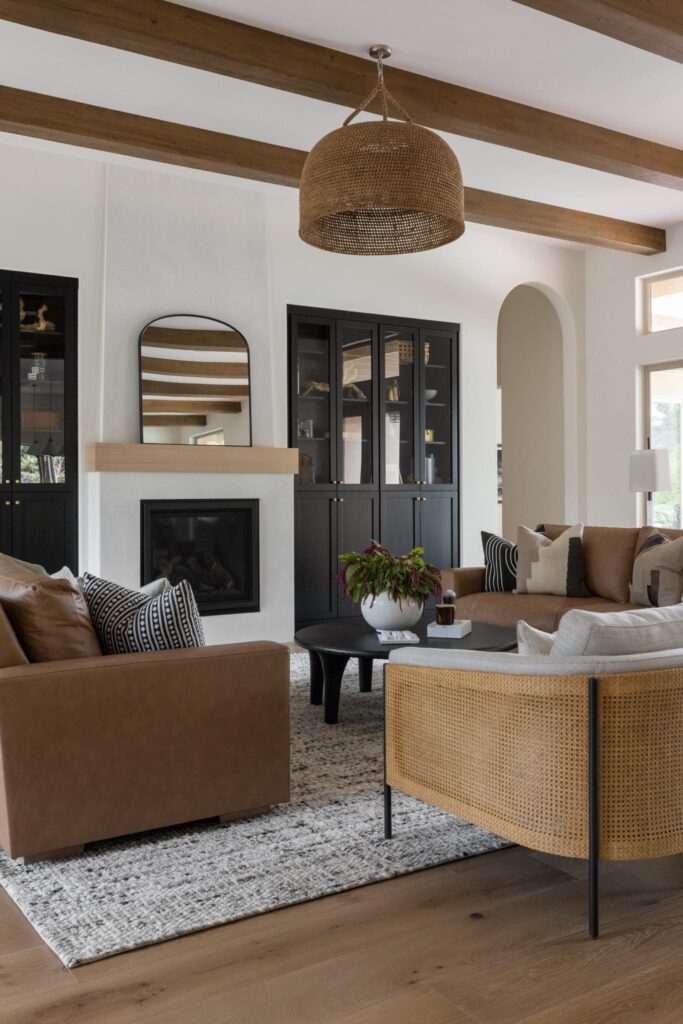
5. Prioritize Traffic Flow
A harmonious home layout ensures that movement throughout the space is effortless. Keep these tips in mind:
- Walkways: Allow for at least 3 feet of clearance in walkways to prevent congestion and ensure ease of movement.
- Furniture Placement: Avoid blocking pathways with large furniture pieces and ensure that there is ample space around key areas like doorways and windows.
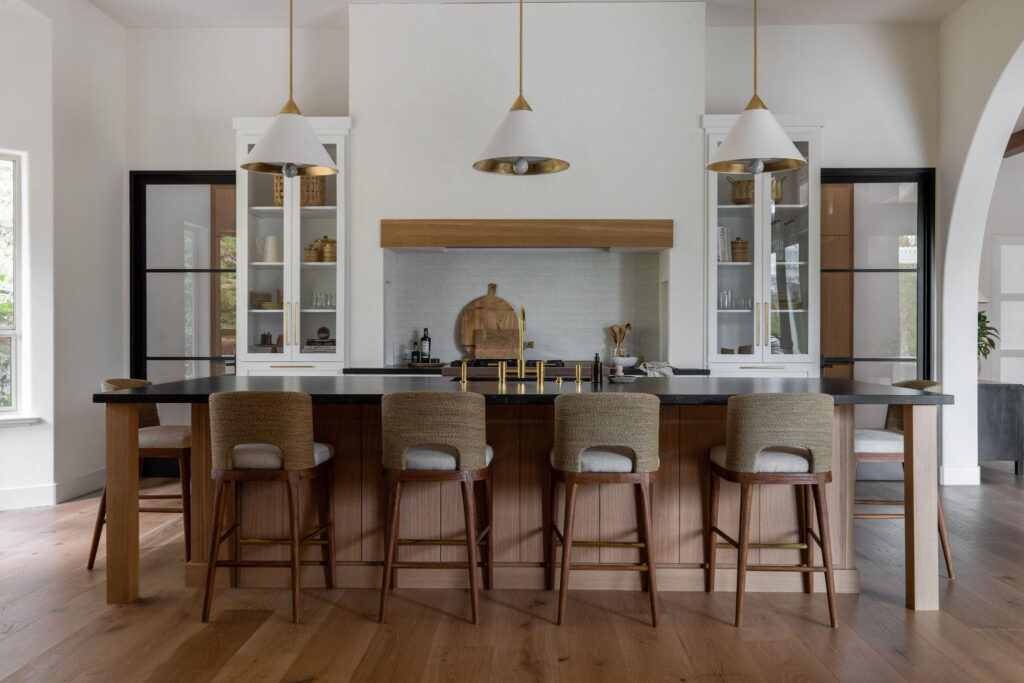
6. Use Color and Texture Wisely
Color and texture can greatly influence the mood and flow of a room:
- Color Scheme: Choose a color palette that complements the overall theme of your home. Soft, neutral tones create a calming effect, while bold colors can energize a space.
- Textures: Incorporate a mix of textures—such as plush rugs, smooth surfaces, and cozy fabrics—to add depth and visual interest without overwhelming the senses.

7. Incorporate Natural Elements
Natural elements bring warmth and serenity to a space. Consider:
- Plants: Indoor plants not only purify the air but also add a touch of nature and tranquility.
- Natural Materials: Use materials like wood, stone, and natural fibers to create a connection with the outdoors and enhance the overall harmony of the space.
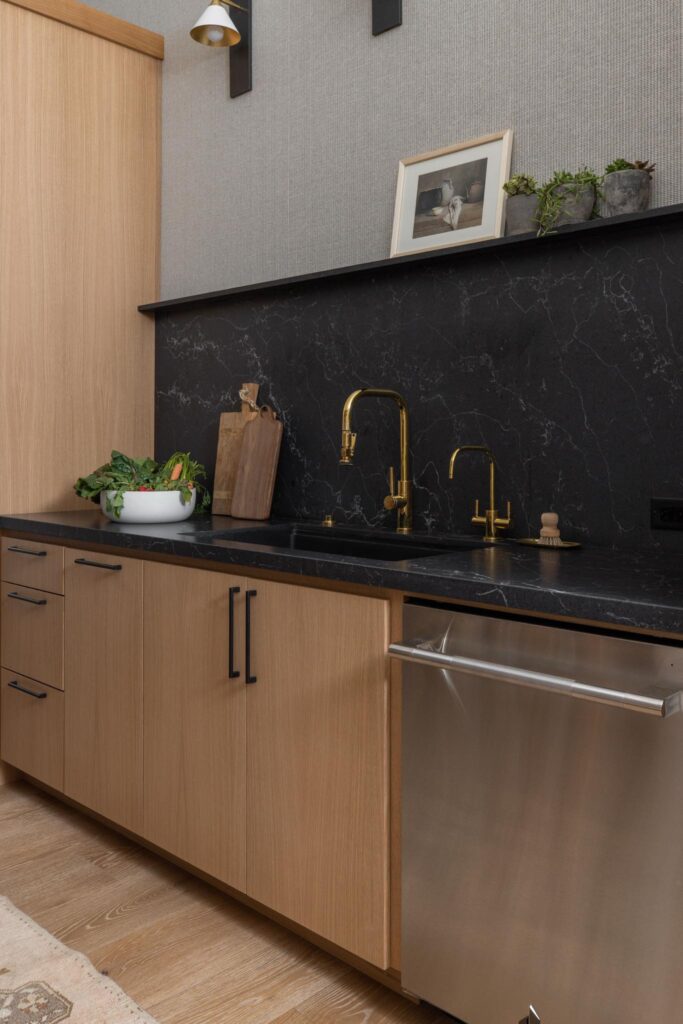
8. Maintain Visual Balance
Visual balance is crucial for creating a pleasing and harmonious layout. Achieve this by:
- Even Distribution: Distribute visual elements—such as artwork, decor, and furniture—across the room to avoid clustering or imbalance.
- Scale and Proportion: Ensure that furniture and decor items are appropriately scaled to the size of the room, avoiding pieces that are either too large or too small for the space.
9. Personalize with Intention
Personal touches make a house feel like a home. However, ensure that personal items are displayed thoughtfully:
- Meaningful Decor: Choose decor that reflects your personality and interests, but avoid overcrowding surfaces.
- Organized Display: Use shelves, frames, and display cases to showcase cherished items in an organized and aesthetically pleasing manner.
10. Consider Lighting
Lighting can dramatically impact the atmosphere of a room. Aim for:
- Layered Lighting: Combine ambient, task, and accent lighting to create a well-lit and inviting space.
- Natural Light: Maximize natural light by using sheer curtains or blinds that allow sunlight to filter in while maintaining privacy.
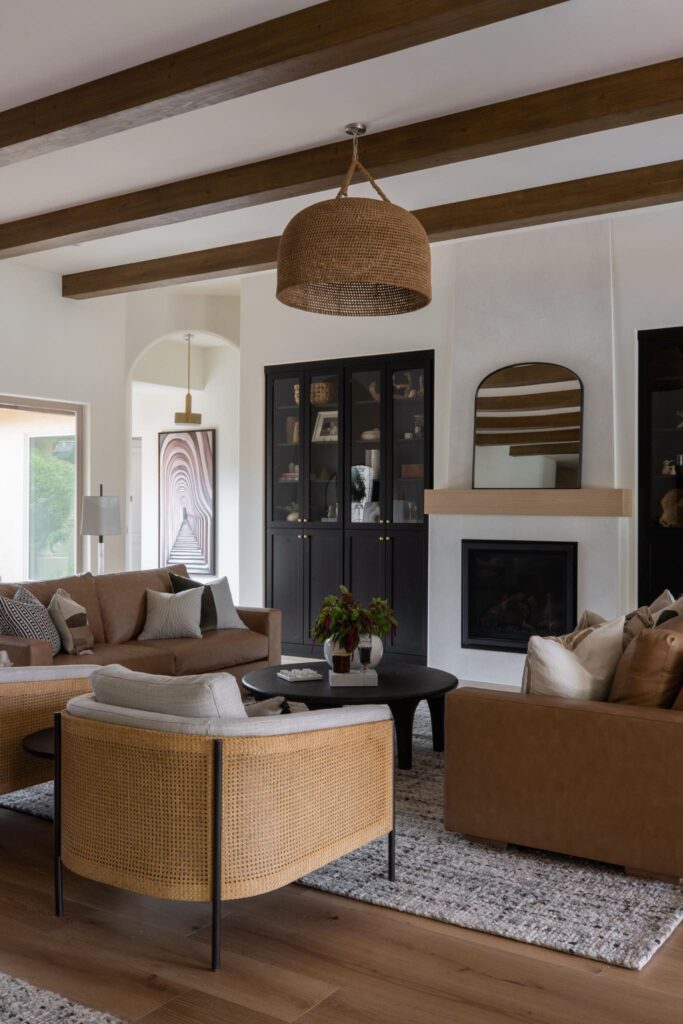
11. Seek Professional Guidance
If you’re feeling overwhelmed, don’t hesitate to seek professional help. Creating a balanced and harmonious home layout involves careful consideration of functionality, aesthetics, and personal style. By following these tips and principles, you can design a space that not only looks beautiful but also feels perfectly aligned with your lifestyle and well-being. If you’re ready to transform your home into a sanctuary of balance and harmony, contact us today to begin your design journey.
All Photos by Nicole Dianne
